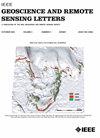Improved Drone Classification Using Polarimetric Merged-Doppler Images
IF 4
3区 地球科学
Q2 ENGINEERING, ELECTRICAL & ELECTRONIC
引用次数: 12
Abstract
We propose a drone classification method for polarimetric radar, based on convolutional neural network (CNN) and image processing methods. The proposed method improves drone classification accuracy when the micro-Doppler signature is very weak by the aspect angle. To utilize received polarimetric signal, we propose a novel image structure for three-channel image classification CNN. To reduce the size of data from four different polarization while securing high classification accuracy, an image processing method and structure are introduced. The data set is prepared for a three type of drone, with a polarimetric Ku-band frequency modulated continuous wave (FMCW) radar system. Proposed method is tested and verified in an anechoic chamber environment for fast evaluation. A famous CNN structure, GoogLeNet, is used to evaluate the effect of the proposed radar preprocessing. The result showed that the proposed method improved the accuracy from 89.9% to 99.8%, compared with single polarized micro-Doppler image. We compared the result from the proposed method with conventional polarimetric radar image structure and achieved similar accuracy while having half of full polarimetric data.利用偏振合并多普勒图像改进无人机分类
我们提出了一种基于卷积神经网络(CNN)和图像处理方法的极化雷达无人机分类方法。当微多普勒特征因方位角而很弱时,该方法提高了无人机的分类精度。为了利用接收到的极化信号,我们提出了一种新的三通道图像分类CNN的图像结构。为了减小来自四种不同偏振的数据的大小,同时确保高分类精度,介绍了一种图像处理方法和结构。该数据集是为三种类型的无人机准备的,该无人机具有极化Ku波段调频连续波(FMCW)雷达系统。为了快速评估,在消声室环境中对所提出的方法进行了测试和验证。使用著名的CNN结构GoogLeNet来评估所提出的雷达预处理的效果。结果表明,与单偏振微多普勒图像相比,该方法的精度从89.9%提高到99.8%。我们将所提出的方法的结果与传统的极化雷达图像结构进行了比较,并在具有一半全极化数据的情况下获得了类似的精度。
本文章由计算机程序翻译,如有差异,请以英文原文为准。
求助全文
约1分钟内获得全文
求助全文
来源期刊

IEEE Geoscience and Remote Sensing Letters
工程技术-地球化学与地球物理
CiteScore
7.60
自引率
12.50%
发文量
1113
审稿时长
3.4 months
期刊介绍:
IEEE Geoscience and Remote Sensing Letters (GRSL) is a monthly publication for short papers (maximum length 5 pages) addressing new ideas and formative concepts in remote sensing as well as important new and timely results and concepts. Papers should relate to the theory, concepts and techniques of science and engineering as applied to sensing the earth, oceans, atmosphere, and space, and the processing, interpretation, and dissemination of this information. The technical content of papers must be both new and significant. Experimental data must be complete and include sufficient description of experimental apparatus, methods, and relevant experimental conditions. GRSL encourages the incorporation of "extended objects" or "multimedia" such as animations to enhance the shorter papers.
 求助内容:
求助内容: 应助结果提醒方式:
应助结果提醒方式:


